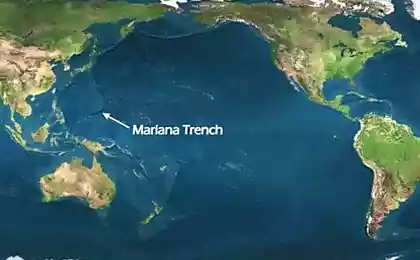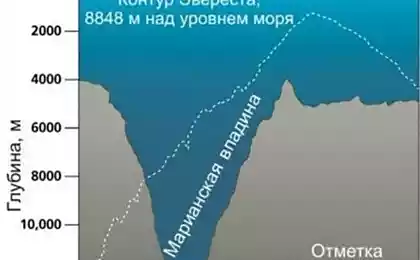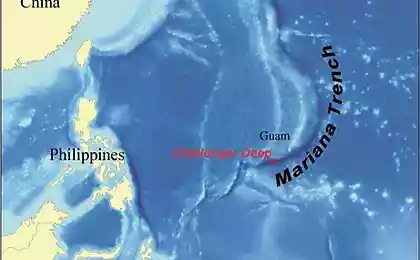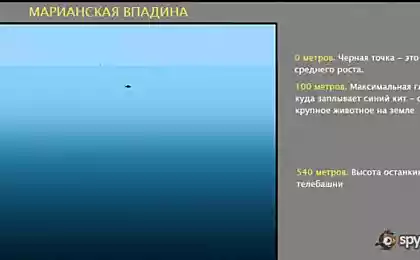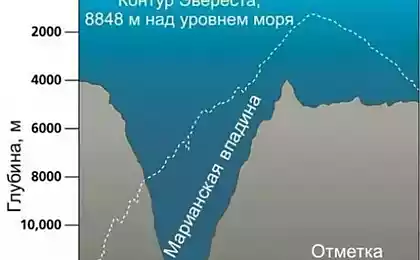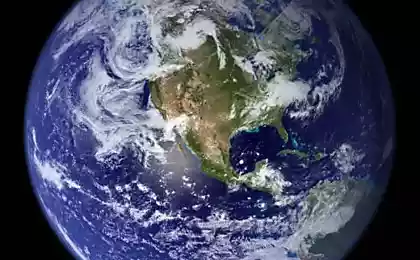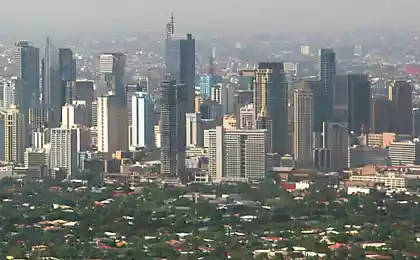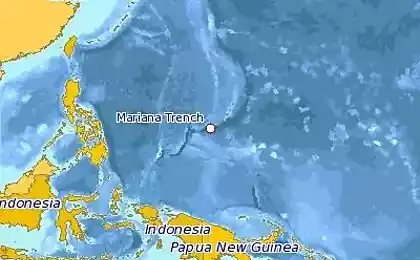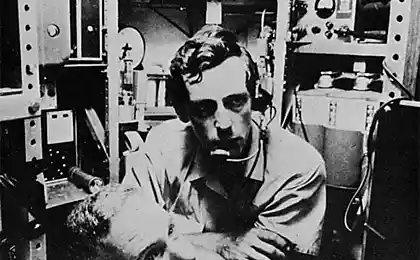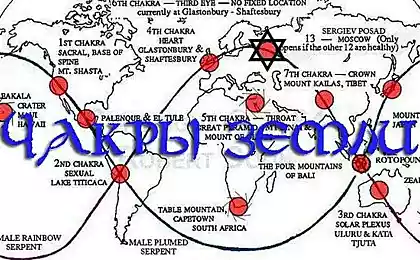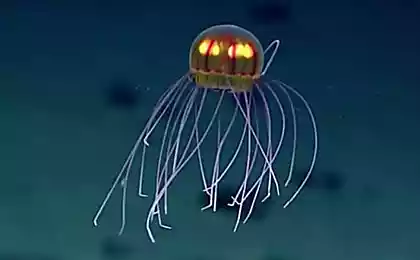4767
As Mariana Trench became the deepest point of the Earth

James Cameron announced last month that he made a successful dive to a depth of 6, 8 miles (11 kilometers) to the deepest part of the Mariana Trench in the submersible single titled «Deepsea challenger»
A famous Hollywood director, and now a researcher temporarily consisting US National Geographic Society, Cameron - one of three people to dive to the deepest point of the Earth, and the only one who managed to stay there long enough to conduct a study.
Ancient lava defined outlines of the Mariana Trench
In fact, the Mariana Trench - it's not such a deep narrow groove, which is meant by the word "depression". The location of this subduction zone likely be characterized by the word "abyss».
Subduction zones appear where any part of the seabed - in this case, the Pacific plate - falls under the other, the Philippine plate. Despite the fact that the tectonic forces accidentally deformed Pacific plate so that it leaves almost vertically into the earth at the level of the sea bottom plate is inclined at a relatively small angle.
Tectonic plate - a large boulder thickness of 60 miles (97 kilometers) or even thicker, said Robert Stern, a geophysicist at the University of Texas, Dallas: "To descend into the bowels of the Earth, plate had to bend, and its curves are very soft».
Another reason why the Mariana Trench is so deep that in the western Pacific is the most ancient seabed in the world - his age about 180 million years.
The seabed was formed by lava in the submarine ridges of the open ocean. When the lava is fresh, it is still relatively warm and fluid and varies greatly on the underlying mantle.
But over time, lava spreads further from its source, while gradually cools and hardens, and so gradually goes down - as in the case of the Mariana Trench.

Mariana Trench is the deepest place on Earth
Mariana Trench can cause big earthquake?
Two other factors have influenced what the Mariana Trench length 1,580 miles (2,550 kilometers) was so amazingly deep.
On the one hand, depression is far from the main mass of the earth, which means its remote location from the mouths of the rivers muddy.
"Many other deep depressions filled with sediment, - wrote in an email to Chris Goldfinger, director of the laboratory study of active tectonic processes and mapping the seabed at Oregon State University. - In the same basin sediment no such ».
Also located nearby tectonic fault lines cut the Pacific plate on the spot depression in a narrow strip, allowing the plate to bend down at a steeper angle than in other subduction zones.
Because of this, most scientists believed that the Mariana Trench could not be the source of large earthquakes, said geophysicist Emile Ocal from Northwestern University.
They believed that because the hard stone of the Pacific plate in place fault should not apply pressure to the overlapping of its Philippine plate, creating friction which would cause an earthquake.
However, the 2004 earthquake in Sumatra and the Japanese earthquake in 2011 "killed" this theory, since the earthquake occurred in other places with the same arrangement of the plates, where they are not expected, said Ocal.
Scientists have no reason to believe that in the area of the Mariana Trench will not have an earthquake with a magnitude of 8, 5 points, he added.
"In this region, there were two well-known case of a tsunami - in 1826 and 1872 years».
Cameron repeated the feat "Man on the Moon»
Despite the record-breaking dive Cameron, it is impossible to understand what is really going on in this subduction zone, as major events occur at a depth of 420 miles (700 kilometers) below the surface.
"This iceberg - said Stern of the University of Texas, drawing an analogy with the film Cameron's" Titanic. " - Cameron did not even been at the top of the iceberg - 11 kilometers from 700. Depression - is the border between the limits of human experience and the reality to which man can not touch ».
Even in this case, in subsequent dives there is a prospect of extraction samples rugged rocks and search for life deeper than ever before.
"Life in extreme conditions grabs, and I think this is the most motivated Cameron - said Goldfinger of Oregon State University. - Let's hope that this new machine will allow for research at such a depth. I think at this point there really room for discoveries ».
Stern of the University of Texas agreed that Cameron's journey - a "something like a trip to the moon."
The researchers determined the order of the colors
French scientists have trained baboons recognize words
